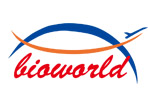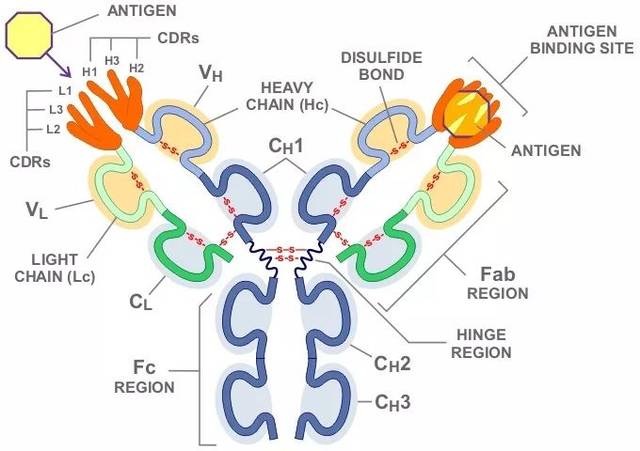Product Name :
SPAK monoclonal antibody Background :
SPAK (STE20/SPS1-related Pro/Ala-rich kinase) and OSR1 (oxidative stress responsive 1) are members of the GCK family serine/threonine kinases. Overexpression and in vitro studies demonstrate that SPAK is able to activate p38 MAP kinase indicating a possible role for SPAK in the stress response. Yeast two-hybrid screening revealed that SPAK and OSR1 bind to Na-K-2Cl cotransporters NKCC1 and NKCC2 and K-Cl cotransporter KCC3. WNK1 and WNK4 phosphorylate SPAK at Thr243/247 and Ser380. Similarly, WNK1 and WNK4 phosphorylate OSR1 at Thr185 and Ser315. Phosphorylation at these sites stimulates SPAK and OSR1 activity, leading to NKCC1 phosphorylation and enhanced NKCC1 activity. SPAK is also phosphorylated at Ser311 by PKCθ in response to T cell activation. Substitution of Ser311 with Ala or specific siRNA knock-down of SPAK dramatically reduces TCR/CD28-induced AP-1 activation, suggesting SPAK is involved in T cell signaling as well. Product :
Mouse IgG1. Supplied in crude ascites with 0.01% sodium azide. Storage&Stability :
Store at 4°C short term. Aliquot and store at -20°C long term. Avoid freeze-thaw cycles. Specificity :
Recognizes endogenous levels of SPAK protein. Immunogen :
Recombinant fusion protein of human SPAK. The exact sequence is proprietary. Conjugate :
Unconjugated Modification :
Unmodification
SPAK monoclonal antibody Background :
SPAK (STE20/SPS1-related Pro/Ala-rich kinase) and OSR1 (oxidative stress responsive 1) are members of the GCK family serine/threonine kinases. Overexpression and in vitro studies demonstrate that SPAK is able to activate p38 MAP kinase indicating a possible role for SPAK in the stress response. Yeast two-hybrid screening revealed that SPAK and OSR1 bind to Na-K-2Cl cotransporters NKCC1 and NKCC2 and K-Cl cotransporter KCC3. WNK1 and WNK4 phosphorylate SPAK at Thr243/247 and Ser380. Similarly, WNK1 and WNK4 phosphorylate OSR1 at Thr185 and Ser315. Phosphorylation at these sites stimulates SPAK and OSR1 activity, leading to NKCC1 phosphorylation and enhanced NKCC1 activity. SPAK is also phosphorylated at Ser311 by PKCθ in response to T cell activation. Substitution of Ser311 with Ala or specific siRNA knock-down of SPAK dramatically reduces TCR/CD28-induced AP-1 activation, suggesting SPAK is involved in T cell signaling as well. Product :
Mouse IgG1. Supplied in crude ascites with 0.01% sodium azide. Storage&Stability :
Store at 4°C short term. Aliquot and store at -20°C long term. Avoid freeze-thaw cycles. Specificity :
Recognizes endogenous levels of SPAK protein. Immunogen :
Recombinant fusion protein of human SPAK. The exact sequence is proprietary. Conjugate :
Unconjugated Modification :
Unmodification
-
 Western blot analysis of SPAK expression in HepG2 (A) whole cell lysates.
Western blot analysis of SPAK expression in HepG2 (A) whole cell lysates.
Bioworld Biotech only provide peptides for our antibodies and do not provide additional peptide customization services.
Price/Size :
USD 368/1mg/vial
Tips:
For phospho antibody, we provide phospho peptide(0.5mg) and non-phospho peptide(0.5mg).Describe :
Blocking peptides are peptides that bind specifically to the target antibody and block antibody binding. These peptide usually contains the epitope recognized by the antibody. Antibodies bound to the blocking peptide no longer bind to the epitope on the target protein. This mechanism is useful when non-specific binding is an issue, for example, in Western blotting (WB) and Immunohistochemistry (IHC). By comparing the staining from the blocked antibody versus the antibody alone, one can see which staining is specific; Specific binding will be absent from the western blot or IHC performed with the neutralized antibody.Formula:
Synthetic peptide was lyophilized with 100% acetonitrile and is supplied as a powder. Reconstitute with 0.1 ml DI water for a final concentration of 10 mg/ml.The purity is >90%,tested by HPLC and MS.
Storage:
The freeze-dried powder is more stable. For short time at 2-8°C. For long term storage store at -20°C.
Note :
This product is for research use only (RUO only). Not for use in diagnostic or therapeutic procedures.
 SPAK monoclonal antibody
SPAK monoclonal antibody  Datasheet
Datasheet COA
COA MSDS
MSDS SHIP
SHIP